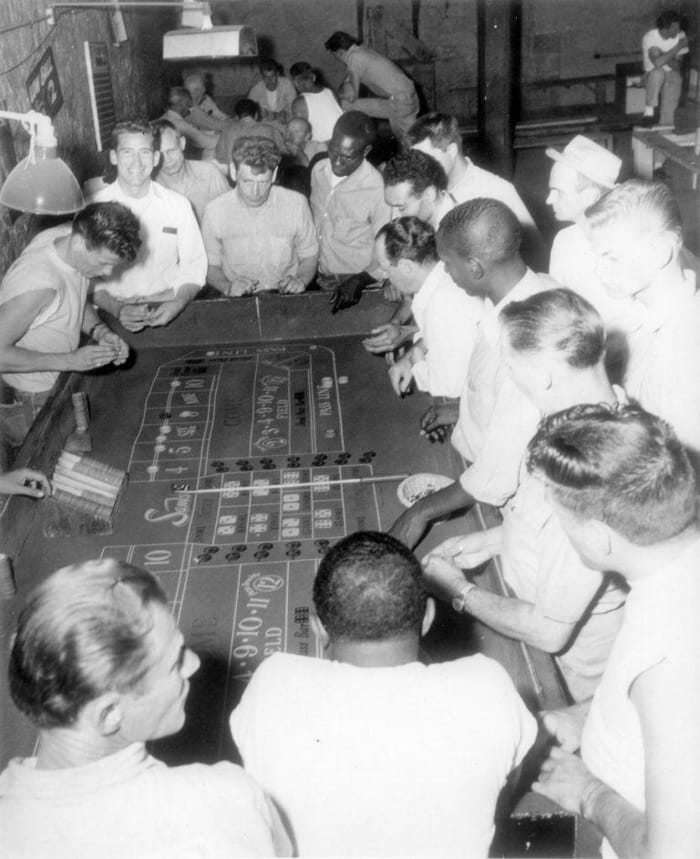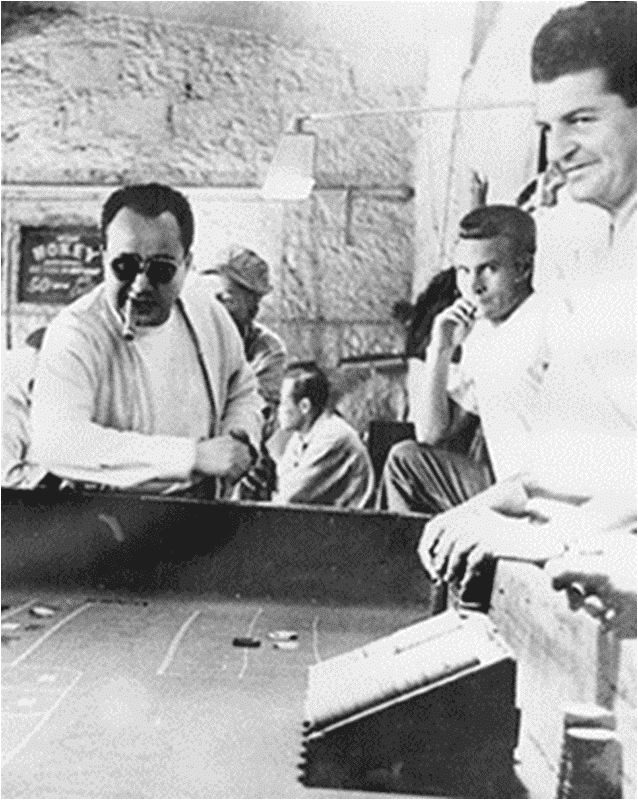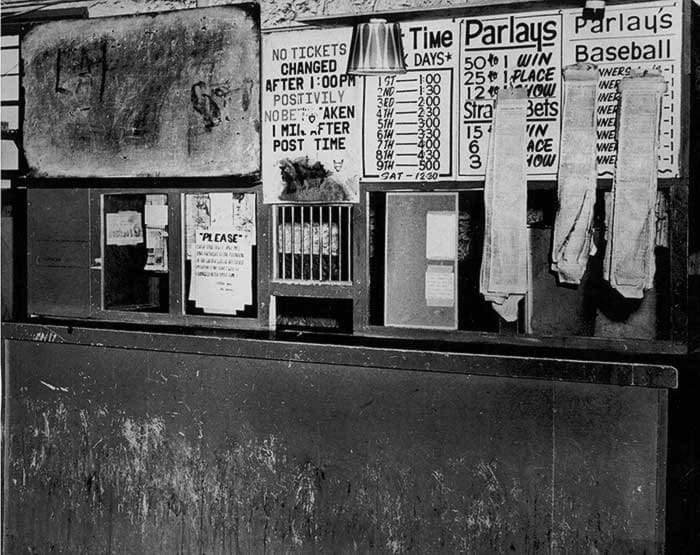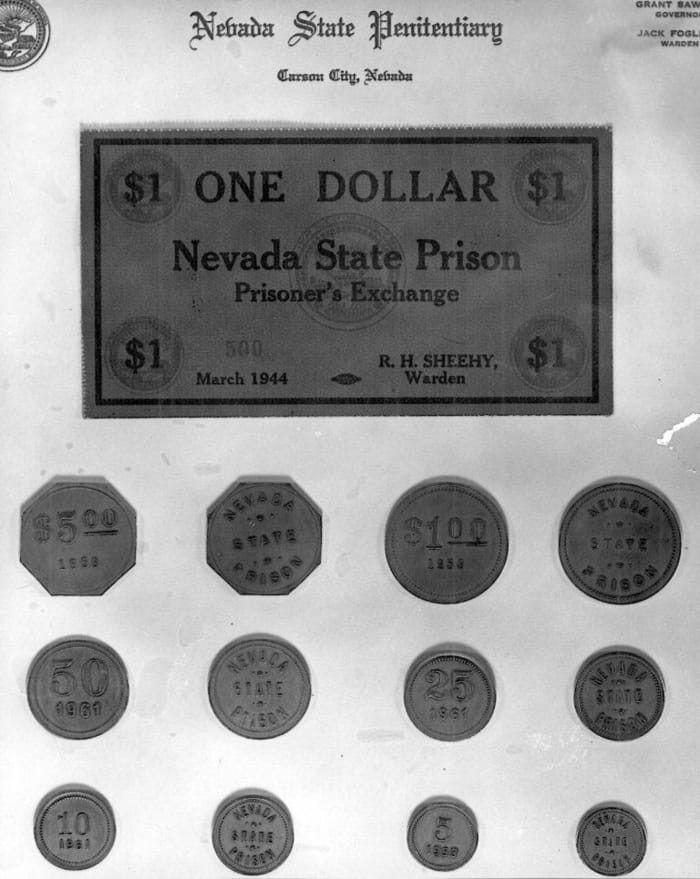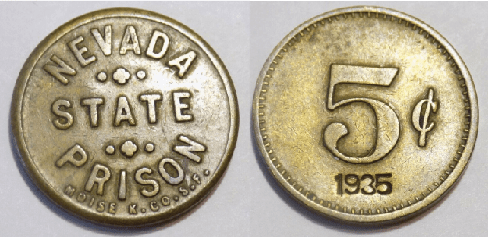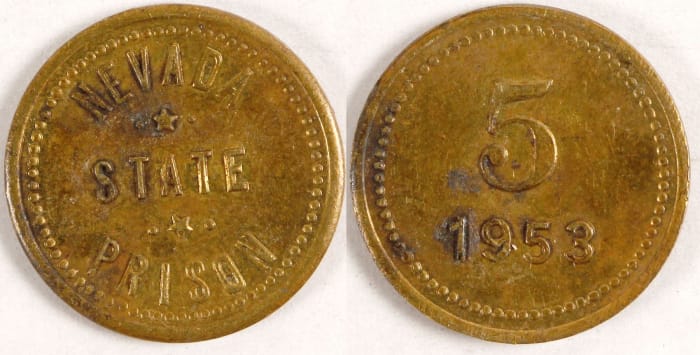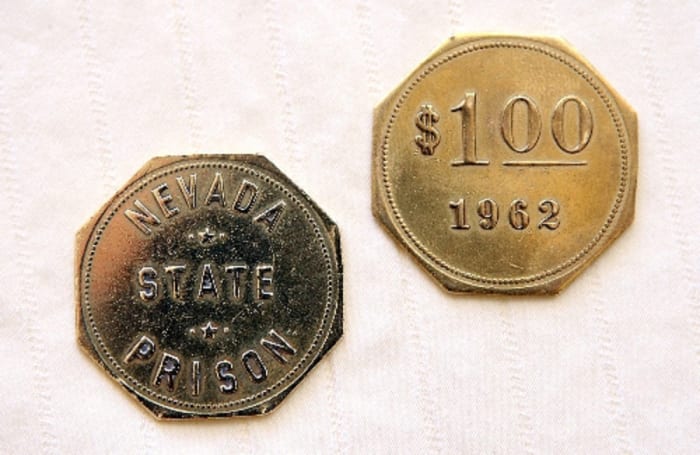In a place where vice is normally prohibited, felons serving time at the Nevada State Prison in Carson City once operated a casino known as the “Bullpen,” which offered every game of chance, including blackjack, craps, poker, gin rummy and sports betting.
The casino, which operated from 1932 to 1967 in a converted stone building, had every gaming license aspirant through rigorous investigation by the Nevada Gaming Control Board. Any hint of criminal doings earned a rejection.
Dennis Neilander, chairman of the Gaming Control Board, shed some light on the reasons behind this phenomenon. “It was a different time. They thought it would keep (the inmates) out of trouble,” he said. Add to this the fact that Nevada was the first state to legalize gaming, in 1931, and accepted gambling for all the years before that. And according to Neilander, before 1959, gaming control largely fell on county sheriffs.
With gaming in Nevada becoming legalized in 1931, astoundingly the Nevada State Prison saw no problems in allowing inmates to take part in gambling that was structured and approved by the prison. As a matter of fact, it was the wardens themselves who arranged space for games of chance and creation of inmate game “owners.” This practice definitely astonished today’s corrections worker to think of legitimizing inmate gambling. Although there might have been very little cheating among the inmate gamblers, this helped increase financial obligations between inmates, which could result in shake downs or even worse for those owing money.
Carl Osborne, a Las Vegas bus driver who has collected an assortment of Nevada State Prison tokens, known as “brass” by the prisoners, agreed that gambling behind bars did keep the inmates out of trouble and cut down on discord.
“I think the games would have been more than honest because cheating inmates would be scared of the consequences,” Osborne said. “If someone got caught cheating, they might have to be transferred out of state for their own safety. You wouldn’t have been very safe there.” Osborne spoke from experience, as he had served a short stretch in the early 1990s at the prison and was on a friendly basis with some of the older prisoners.
According to Osborne, ferreting out tokens to add to his collection has become tougher, as they are becoming increasingly rare. The “brass” pieces came in denominations of 5, 10, 25 and 50 cents, $1 and $5. They were coined at the prison from 1945 to 1964. To snag one of these rarities, his winning bids are usually in the neighborhood of $200. eBay and WorthPoint sometimes offer them for sale.
The Nevada State Prison Casino doors were shuttered in April 1967 by Warden Carl Hocker. Hocker, previously from San Quentin, was straightforward and stringent when it came to discipline and ended the casino’s 35-year run. Hocker really took a hard stand against the prison operating the casino. “I think gambling in prison is a degradation, and it’s certainly not constructive. We’re trying to replace it with constructive, wholesome activities that will contribute to a decent, healthful state of mind,” he said.
As if to clear the prison of all vestiges of the casino era, he quickly sold off all the brass.
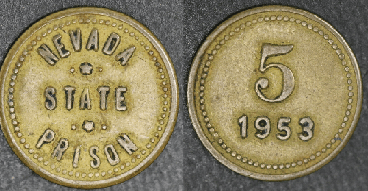
This 1953 Carson City Nevada State Prison “5“ brass token, 18mm, sold on eBay in July for $39.96. The seller sold another 1953 token in June for $37.99.
Much to the chagrin of the gambling inmates, Hocker’s image of clean-living leisure interests were bridge, chess and handicrafts, such as making bead necklaces. He also added ping pong, volleyball, and shuffleboard to the list.
It might have been the riot in 1967 that spurred Hocker to waste little time in closing the casino. According to Howard Herz, a resident of Gardnerville and a notable expert on Nevada Prison gaming tokens, after the riot, a number Nevada legislators put forward a bill to shut down the casino. But that casino closure bill wasn’t needed — as Hocker wasted no time in bulldozing the Bullpen. Herz also pointed out that the Bullpen wasn’t an illegal casino, but one sanctioned by the state prison and the backgrounds of all gamblers had been checked. Herz said that any inmate who had money could play, and “winnings” were credited into each prisoner’s money account.
Every so often during the years the prison casino operated, a story about it would pop up in the media, but it wasn’t until the time of the closure that it drew more attention. Today, many Nevadans on the street, if asked, most likely don’t remember the era of legal gaming in the state prison.
Although some evidence points to the fact that the prison casino helped to quell disturbances within the prison walls, it is highly unlikely that casinos would ever be initiated into U.S. prisons today. The Nevada State Prison Casino has gone the way of the gunfights in the streets of Nevada’s mining towns.
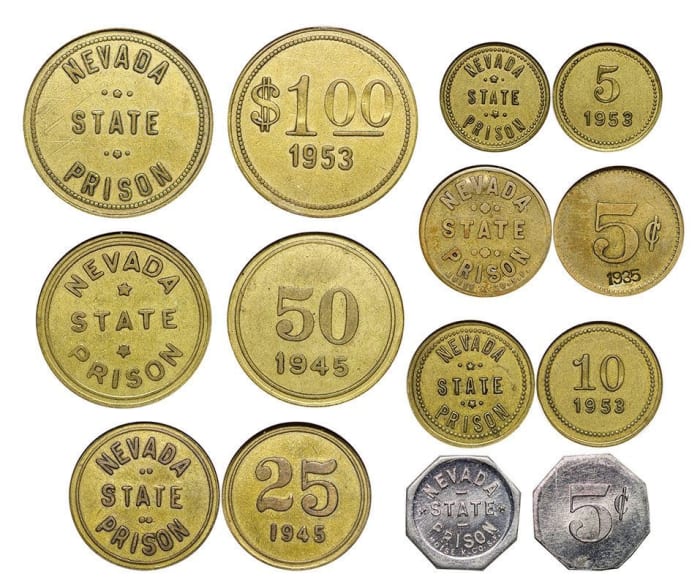
Nevada State Prison token collection of 36 different pieces sold at auction in 2014 for $1,050.
Courtesy of Holabird-Kagen Americana
To learn more about Nevada State Prison gaming tokens, such as grading and detailed descriptions, the Nevada Gaming Tokens Book is a good resource and can be purchased at www.spinettisgaming.com for $39.99.
Sources
Nevada Gaming Tokens, spinettisgaming.com/products/nevada-gaming-tokens-book
“Nevada State Prison Gambling Tokens,” pawnstarsthegame.fandom.com/wiki/Nevada_State_Prison_Gambling_Tokens
“Nevada State Prison casino relegated to history,” Nevada Appeal, December 5, 2010, www.nevadaappeal.com/news/2010/dec/05/nevada-state-prison-casino-relegated-to-history/
“Prison Casino is History,” Las Vegas Review-Journal, November 26, 2010
“Rare Nevada Prison Casino Tokens!” spinettisgaming.com/blogs/casino-gaming-history-news/80873924-rare-prison-casino-tokens
Sheldon, David, “The Casino In Nevada State Prison,” August 2, 2018, www.casino.org/blog/nevada-state-prison-casino/


